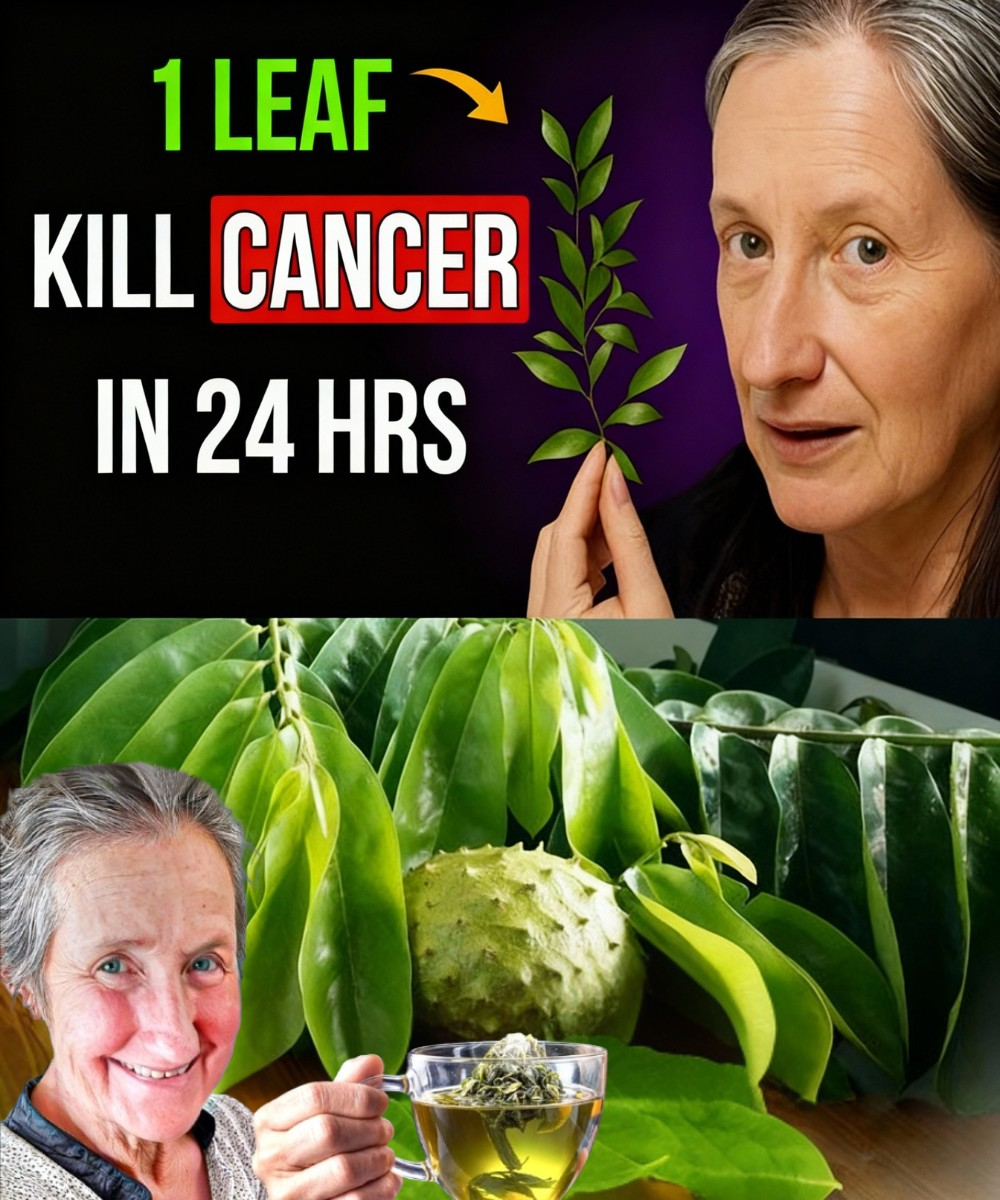Imagine the ultimate medical breakthrough—a simple, glossy green leaf from a tropical tree, holding the power to annihilate cancer cells within a single day. A claim so audacious, so revolutionary, it stops the world in its tracks. This isn’t science fiction; it’s the viral sensation surrounding the soursop tree, a plant that has leapt from the humid depths of the rainforest onto the global stage as a supposed miracle cure.
Your screen is alive with vibrant imagery: the spiky, exotic soursop fruit, its creamy white flesh tantalizingly exposed, and, most crucially, the heart-shaped leaf, held up like a beacon of hope against a dramatic, verdant backdrop. This isn’t just about a delicious fruit; it’s about a bold promise—a natural, accessible antidote to one of the world’s most feared diseases.
But before you rush to your local health food store, you must ask the critical question: Is the soursop a genuine, hidden weapon of nature, or is this the most compelling piece of sensationalized folklore of our time?
Prepare to dive deep into a journey that thrillingly blends ancient wisdom, the relentless pursuit of modern science, and the essential voice of caution. We will dissect the hype, explore the chemistry, and unveil the shocking truth that lies beneath the glossy surface of this tropical wonder. This is the definitive investigation into the soursop phenomenon, designed to keep you engaged, informed, and captivated until the very last word.
🌴 Unmasking Soursop: The Spiky King of the Tropics
The soursop, known scientifically as Annona muricata, is far more than just a fruit. It’s an evergreen tree, a resilient member of the Annonaceae family, native to the sun-drenched regions of Central and South America, the Caribbean, and now cultivated across parts of Africa and Southeast Asia.
Its appearance is unforgettable: a large, dark green, heart-shaped fruit covered in soft, flexible spines, earning it nicknames like “graviola,” “guanábana,” and often compared to a peculiar blend of a custard apple and a porcupine. The fruit’s flesh is sweet, slightly acidic, and deeply aromatic—a prized delicacy in countless cultures.
However, the real international acclaim doesn’t stem from its culinary appeal, but from the incredible versatility and purported power locked within its every part: the leaves, the bark, the roots, and the seeds. For centuries, indigenous healers have utilized soursop in their pharmacopoeia to treat a vast array of ailments, from inflammation and parasitic infections to digestive issues and, critically, serious illnesses.
The recent explosion of attention, amplified by the internet’s whisper network, is directly linked to the audacious, yet unverified, claim that its leaves can act as a rapid-fire cancer killer. This buzz is magnetic, drawing in anyone touched by the disease and fueling an insatiable curiosity: How can one plant hold such unbelievable potential?
🧪 The Chemistry of Hope: Soursop’s Promising Power
Soursop’s medicinal mystique is rooted in its incredibly complex and potent phytochemical profile. The fruit itself is a nutritional powerhouse, packed with essential nutrients:
Vitamin C: A crucial antioxidant for immune defense.
B Vitamins: Essential for energy metabolism and nerve function.
Fiber: Supporting digestive and cardiovascular health.
Yet, the true star of the show, the compound at the heart of the cancer claims, is a unique group of natural plant compounds called Annonaceous Acetogenins (AGEs).
These AGEs are concentrated primarily in the soursop leaves and seeds. Preliminary laboratory (in vitro) and animal (in vivo) studies have thrown the scientific community into a frenzy by suggesting these compounds possess remarkable biological activity:
Targeted Toxicity: Some research indicates that AGEs may selectively inhibit the growth of certain cancer cells by disrupting their vital energy production (ATP). In simple terms, they may essentially starve the malignant cells while leaving healthy cells relatively unharmed.
Broad-Spectrum Potential: Early findings have shown potential efficacy against a range of human cancer cell lines, including those responsible for breast, prostate, lung, colon, and pancreatic cancers.
Anti-inflammatory & Anti-microbial: Beyond cancer, the plant’s extracts exhibit strong anti-inflammatory effects and possess anti-parasitic and anti-microbial properties, validating its use in traditional medicine for treating fevers and infections.
Imagine the compelling narrative: a cup of soursop leaf tea, brewed from simple, dried leaves, becoming a natural shield against disease. This blend of traditional use and preliminary modern research has ignited a powerful wave of optimism and urgency, demanding a deeper, more rigorous investigation into its capabilities.
🚨 The Essential Reality Check: Risks, Limitations, and Unproven Claims
It is at this juncture that the journey must shift from intoxicating hope to grounded scientific skepticism. The viral “one leaf in 24 hours” declaration is a profound oversimplification of an infinitely complex, multi-stage disease, and it is entirely lacking in verifiable clinical proof.
The excitement generated by lab studies must be tempered by the cold, hard facts of the research timeline:
No Human Clinical Trials: The overwhelming majority of promising results are confined to petri dishes and animal models. There is a critical, massive gap between a compound killing cells in a lab and a safe, effective, and standardized drug treating a complex human being. Large-scale, peer-reviewed human trials are virtually nonexistent.
Dosage and Standardization: Without clinical trials, the safe and effective dosage for humans is unknown. How many leaves? Which preparation method? What is the concentration of active AGEs? These are questions that remain unanswered, making self-medication a potentially dangerous gamble.
Ver continuación en la página siguiente
